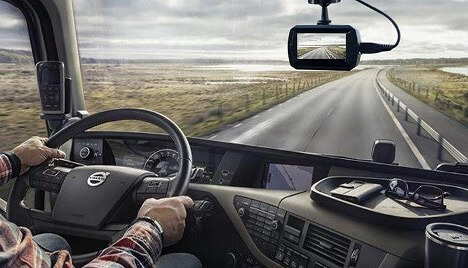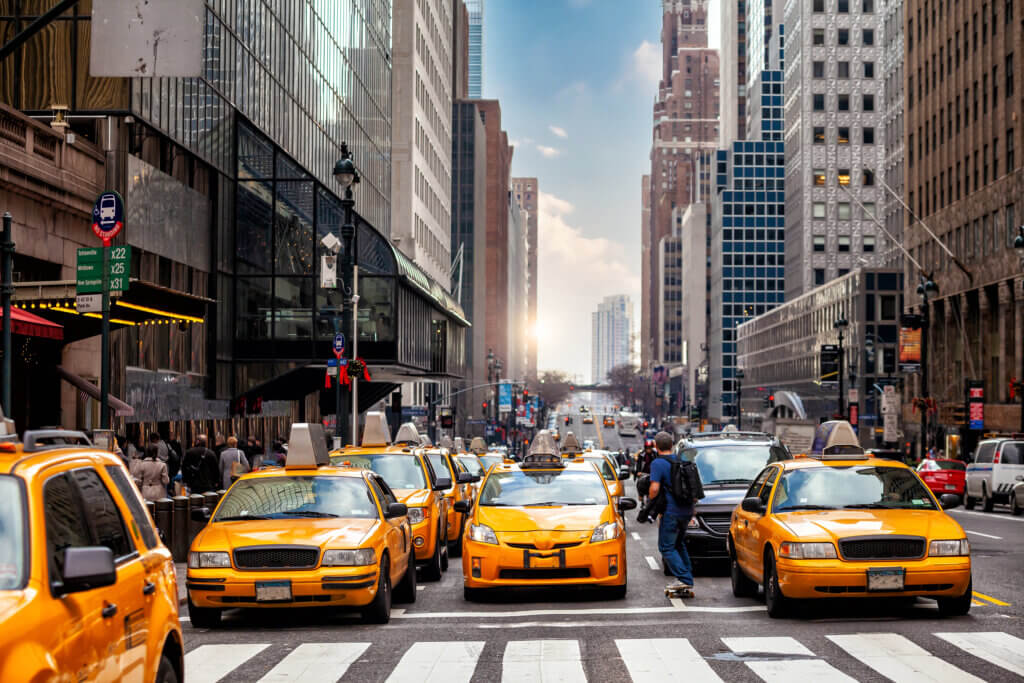Three seconds asleep at the wheel
Even more than driving under the influence of alcohol or drugs, microsleep, drifting off while driving, is a leading cause of fatal car crashes across the world every year. Microsleeps occur so quickly that people might not even realize they have fallen asleep. Smart dash cams can help prevent these tragedies.

Even more than driving under the influence of alcohol or drugs, microsleep, drifting off while driving, is a leading cause of fatal car crashes across the world every year. Microsleeps occur so quickly that people might not even realize they have fallen asleep. Smart dash cams can help prevent these tragedies.
Microsleeps make for dangerous driving because it only takes a few seconds to make a major mistake at the wheel. If you doze for three seconds while going 96 kph (60 mph), you can travel 90 meters (300 feet) in the wrong direction. This can send you off the road or into an oncoming lane of traffic.
In the United States, the National Highway Traffic Safety Administration (NHSTA) estimates that up to 6,000 fatal crashes a year are linked to drowsy drivers. In one survey, four percent of drivers said they had fallen asleep while driving at least once in the past 30 days.
“Short bursts of sleep, or microsleep, while driving can be dangerous,” says sleep expert Samuel Gurevich, MD at the Cleveland Clinic Florida. “It’s important to recognize it’s happening and the situations that cause it and to take it seriously. Sleepiness causes a significant number of car and industrial accidents. Microsleep can have big impacts on you and those around you.”
The most common cause of microsleep is sleep deprivation.
“WHEN WE BORROW TIME FROM SLEEP TO SOCIALIZE, WORK OR STUDY, OUR BRAINS REMAIN TIRED AND SEEK THAT MISSED SLEEP. THE LONGER IT’S BEEN SINCE YOUR WERE LAST ASLEEP, THE SLEEPIER YOU GET. EVENTUALLY, THE BRAIN TRIES TO PROACTIVELY PUT YOU TO SLEEP, AND OFTEN, IT CAN HAPPEN IN DANGEROUS SITUATIONS. DRIVING IS ONE OF THE MOST COMMON ONES.”
–Samuel Gurevich, MD, Cleveland Clinic, Florida
The human brain can respond to sleep deprivation by reducing alertness and generating microsleeps, involuntary episodes of sleep lasting a few seconds. During microsleep, a person may appear to be awake with eyes open, but the brain is not processing information. Thus, lapses in attention occur.
Episodes of microsleep can be triggered by drinking alcohol; taking medications such as antihistamines or sleeping pills; having a medical condition, such as sleep apnea or insomnia, or working a night shift.
“It can occur while you’re on your couch watching TV or reading a book,” observes Dr. Gurevich. “But it’s dangerous when it happens when you’re behind the wheel of a tractor-trailer or at a switch in a nuclear power plant. There are unfortunately a lot of industrial accidents where sleepiness is the culprit.”
Dash Cams Show Risks Long-Haul Drivers Take
Traffic accidents involving large trucks in the United States have increased 47 percent according to the National Safety Council, and in 2021, these vehicles were responsible for nine percent of all vehicles involved in fatal crashes.
The NHSTA finds that microsleeps occur most frequently between midnight and 6 am, or in the late afternoon. At both times, people experience dips in the human body’s internal clock that regulates sleep.
The U.S. Centers for Disease Control and Prevention (CDC) says that most drowsy driving crashes or near misses occur between midnight and 2:00 am, between 4:00 and 6:00 am, or between 2 and 4 in the afternoon.
Accidents attributed to microsleeps frequently occur on rural roads and highways, and often involve only a single driver and no passengers. The trucks appear to have run off the road at a high rate of speed with no evidence of braking, according to the NHSTA.
Several studies worldwide have highlighted in particular the severity of collisions related to drowsy driving and their substantial risk of fatality.
A major risk here comes from microsleeps that lead to impaired cognitive and motor performance, including slower reaction times, decreased attention – even complete loss of consciousness.
Microsleep episodes can have a significant impact on driving performance and increase the likelihood of dozing off while driving, say the researchers at the Graduate School of Biomedical and Health Sciences at Hiroshima University.
In 2022, National Police Agency of Japan announced that falling asleep at the wheel was to be included in the same category of “forward inattention” as distraction, which has been the most frequent cause of fatal traffic accidents in the country for over 10 years.
Past research into typical microsleep behaviors has investigated one or more aspects of the problem such as eye closure or changes in pupil diameter.
But no study has yet performed an analysis that takes a holistic approach – considering the driver’s eye and mouth movements as well as the movements of his or her entire body and vehicle driving behavior.
Most studies have only considered driver performance during computer simulations. No research has yet looked at actual collisions of large trucks.
“In recent years, there has been an explosion in the use of dashcam video recorders,” said Hajime Kumagai, lead author of the paper and a specialist in sleep medicine with the Graduate School of Biomedical and Health Sciences at Hiroshima University.
“This means that a great many traffic accidents, and their possible relationship to episodes of microsleeping have been recorded. This inspired us to employ dashcam footage to investigate microsleep-related behaviors immediately prior to real-world truck collisions,” Kumagai said.
In total, the researchers reviewed 3,120 seconds of video footage from interior and exterior dashcams across 52 cases from truck collisions in Japan that had actually happened.
They analyzed the footage from one minute before the crash right up until the crash. In each incident, the person at the wheel had been a professional driver, and all crashes occurred on either urban roads or highways.
The footage was visually analyzed to evaluate any eye changes and microsleep-related activity including the driver’s actions to try to prevent falling asleep, behavioral signs of microsleep, and abnormal vehicle behavior.
The researchers concluded that the key signs of microsleep include behaviors that indicate a “creeping sleepiness” such as the absence of body movement, relaxation of the muscles such as back and neck muscles, as well as calves and quadriceps, eyes being half-closed, and closure of the eyes for one second or more.
“UP TO NOW, TECHNOLOGIES USED TO ATTEMPT TO DETECT AND COUNTER FALLING ASLEEP AT THE WHEEL HAVE FOCUSED MAINLY ON MONITORING THE DRIVER’S EYES. WHAT WE FOUND MEANS THAT IT IS CRUCIAL TO MONITOR NOT JUST THE EYES BUT ALSO THE DRIVER’S WHOLE BODY, AS WELL AS VEHICLE BEHAVIOR IN ORDER TO RELIABLY DETECT MICROSLEEP-RELATED ACTIVITY.”
– Professor Emeritus Aichi Medical University, study co-author and sleep expert Toshiaki Shiomi
Developing advanced safety systems that can detect and alert drivers to potential microsleep episodes involving a whole-of-body approach combined with monitoring the vehicle for microsleep-related abnormal vehicle maneuvers could help to reduce accidents in the trucking industry.
These safety systems might include technologies that monitor both the insides and outsides of trucks using cameras or other sensors, as well as algorithms that can analyze such data in real-time to detect signs of sleepiness or fatigue.
These systems could then alert drivers with an alarm when they are at risk of falling asleep at the wheel.
Preventing Microsleep Tragedies
Dr. Gurevich says the first step to preventing microsleep is recognizing when you’re tired and not trying to push through it. “The consequences can be so severe. You’re potentially putting people’s safety at risk – including your own. If you’re tired while driving, find a safe place to pull over to take a short nap to refresh yourself,” he advises.
Even better, he says, “Don’t take a long drive if you’re sleep deprived. Rearrange your schedule and catch up on your sleep first. So many people get hurt or worse because of this phenomenon.”
The CDC, too, offers strategies to prevent a crash due to drowsy driving:
1 – Get adequate sleep. Most adults need about seven to eight hours to maintain proper alertness.
2 – If a driver is very sleep deprived and sleepy, consuming caffeine and taking a short nap still might not keep him awake enough to drive safely. Accidents can happen in the last few miles before arriving home. Almost 60 percent of respondents who fell asleep while driving said this occurred when driving less than one hour, and 70 percent reported feeling awake enough to drive at the beginning of the trip.
3 – Consider getting transportation home or taking a nap at the worksite at the end of the shift. Drivers who are sleep-deprived cannot control when microsleeps occur and cannot reliably force themselves to stay awake. Just a few seconds of sleep while driving can cause a driver to lose control of the car and crash.
“If you are struggling to stay awake while driving and have put the window down, turned up the radio, and pinched yourself, you are already impaired enough to cause an accident,” according to the CDC, which notes that research does not indicate that those strategies help. Using a cell phone while driving is not a proven method to remain awake, the CDC warns. On the contrary, safety experts recommend banning use of cell phones while driving because it increases the crash risk factor.
An effective strategy is a dash cam equipped with video AI that can alert long-haul truck drivers to help them avoid microsleep accidents.
Accurate and transparent driver safety programs based on video AI can help fleet managers create programs that reward drivers’ positive actions and communicate areas for improvement, backed by video evidence recorded on the smart dash cam.
Smart dash cams review every minute of driving time and use AI to provide insights into behaviors to reward and areas that need improvement. Dash cams equipped with AI-sensors can detect drivers who are drowsy, texting, using their phones, or not paying attention to the road. These dash cams then send audible alerts to drivers so they can refocus and drive safely.
Toute l’actualité de Movin’On
dans votre boîte mail
Auteur
Partager
Tweets de @movinonconnect
Movin'On 2035 TODAY EP02 - Circular Economy & Competitivity
Movin’On 2035 TODAY EP01 – Fair Mobility for All https://x.com/i/broadcasts/1yNxagBrWZbGj
✨ THAT'S A WRAP!
Movin'On Summit 2024 has just concluded in Brussels!
More than 350 leaders and experts in sustainable mobility gathered to exchange ideas, collaborate, and share their vision for desirable and decarbonised mobility in Europe. Together, we explored ways to build…
🔴 Live from #MovinOnSummit2024
@AshaSumputh has just invited Denis Machuel, CEO at @AdeccoGroup and Florent Menegaux, President of the @Michelin Group & President of Movin'On
L’actualité de la mobilité durable
Découvrez les dernières tendances, des analyses thématiques et nos prochains rendez-vous






